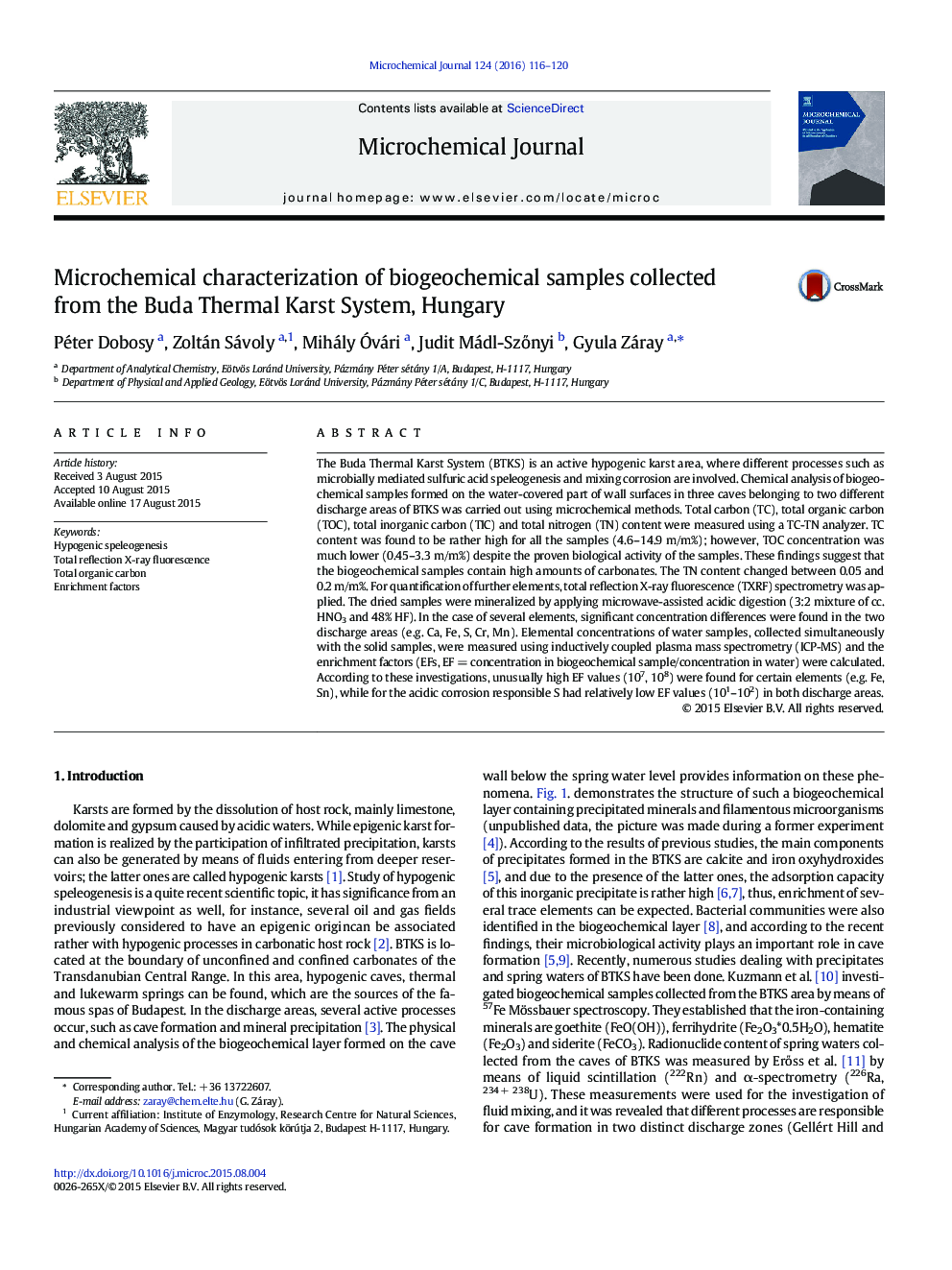| Article ID | Journal | Published Year | Pages | File Type |
|---|---|---|---|---|
| 7642011 | Microchemical Journal | 2016 | 5 Pages |
Abstract
The Buda Thermal Karst System (BTKS) is an active hypogenic karst area, where different processes such as microbially mediated sulfuric acid speleogenesis and mixing corrosion are involved. Chemical analysis of biogeochemical samples formed on the water-covered part of wall surfaces in three caves belonging to two different discharge areas of BTKS was carried out using microchemical methods. Total carbon (TC), total organic carbon (TOC), total inorganic carbon (TIC) and total nitrogen (TN) content were measured using a TC-TN analyzer. TC content was found to be rather high for all the samples (4.6-14.9Â m/m%); however, TOC concentration was much lower (0.45-3.3Â m/m%) despite the proven biological activity of the samples. These findings suggest that the biogeochemical samples contain high amounts of carbonates. The TN content changed between 0.05 and 0.2Â m/m%. For quantification of further elements, total reflection X-ray fluorescence (TXRF) spectrometry was applied. The dried samples were mineralized by applying microwave-assisted acidic digestion (3:2 mixture of cc. HNO3 and 48% HF). In the case of several elements, significant concentration differences were found in the two discharge areas (e.g. Ca, Fe, S, Cr, Mn). Elemental concentrations of water samples, collected simultaneously with the solid samples, were measured using inductively coupled plasma mass spectrometry (ICP-MS) and the enrichment factors (EFs, EFÂ =Â concentration in biogeochemical sample/concentration in water) were calculated. According to these investigations, unusually high EF values (107, 108) were found for certain elements (e.g. Fe, Sn), while for the acidic corrosion responsible S had relatively low EF values (101-102) in both discharge areas.
Keywords
Related Topics
Physical Sciences and Engineering
Chemistry
Analytical Chemistry
Authors
Péter Dobosy, Zoltán Sávoly, Mihály Ãvári, Judit Mádl-SzÅnyi, Gyula Záray,
